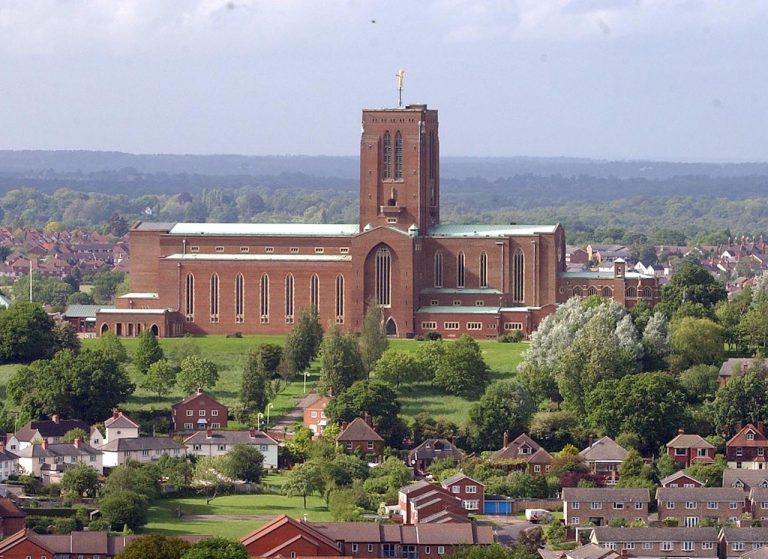
The cathedral was consecrated in 1961 but its origins go back to the reign of Henry VIII. In 1534 Guildford was made a suffragan bishopric to assist Winchester. Population increase in the 19th and early 20th c. made it necessary to create an independent See in 1927 using Holy Trinity as a pro-cathedral.
The cathedral was designed by Sir Edward Maude in 1932 and work began in 1936. The chancel and crossing were opened in 1954 and the nave in 1961 with a final completion of porches at the west end in 1965-6.
In form it resembles a traditional Gothic cathedral but in brick and concrete and some deride it as looking like a power station. However it’s dramatic position on Stag Hill makes it a landmark from road and train for miles around. It’s iconic golden Angel was, for many years, the only part of the cathedral that was floodlit and floated in the night sky above the town.
It is perhaps inside that the cathedral is seen at its best with its tall narrow aisles, plain walls and mid-twentieth century artwork. The result has been described as subtle with the power to compel if not reverence certainly contemplation.
University of Surrey
The University, established by Royal Charter in 1966 has transformed Guildford’s image from commuter town to a major centre for satellite and mobile communications research.
In 1963 the Robbins Report recommended an expansion of university education and in particular that Colleges of Advanced Technology should be come universities. Battersea College of Technology was one of these and was also outgrowing its site. It had been founded in 1891 as Battersea Polytechnic Institute, to provide higher education to London’s poorer inhabitants. In 1965 the university acquired a green field site on the side of Stag Hill by Guildford Cathedral. The move to Guildford was completed by 1970.
The university owns the Surrey Research Park, providing facilities for over 110 companies engaged in research. It has been awarded three Queen’s Anniversary Prizes for its research, with the 2014 Research Excellence Framework ranking 78% of the university’s research outputs as “world leading” or “internationally excellent”. In 2016 it was named as The Sunday Times University of the Year.